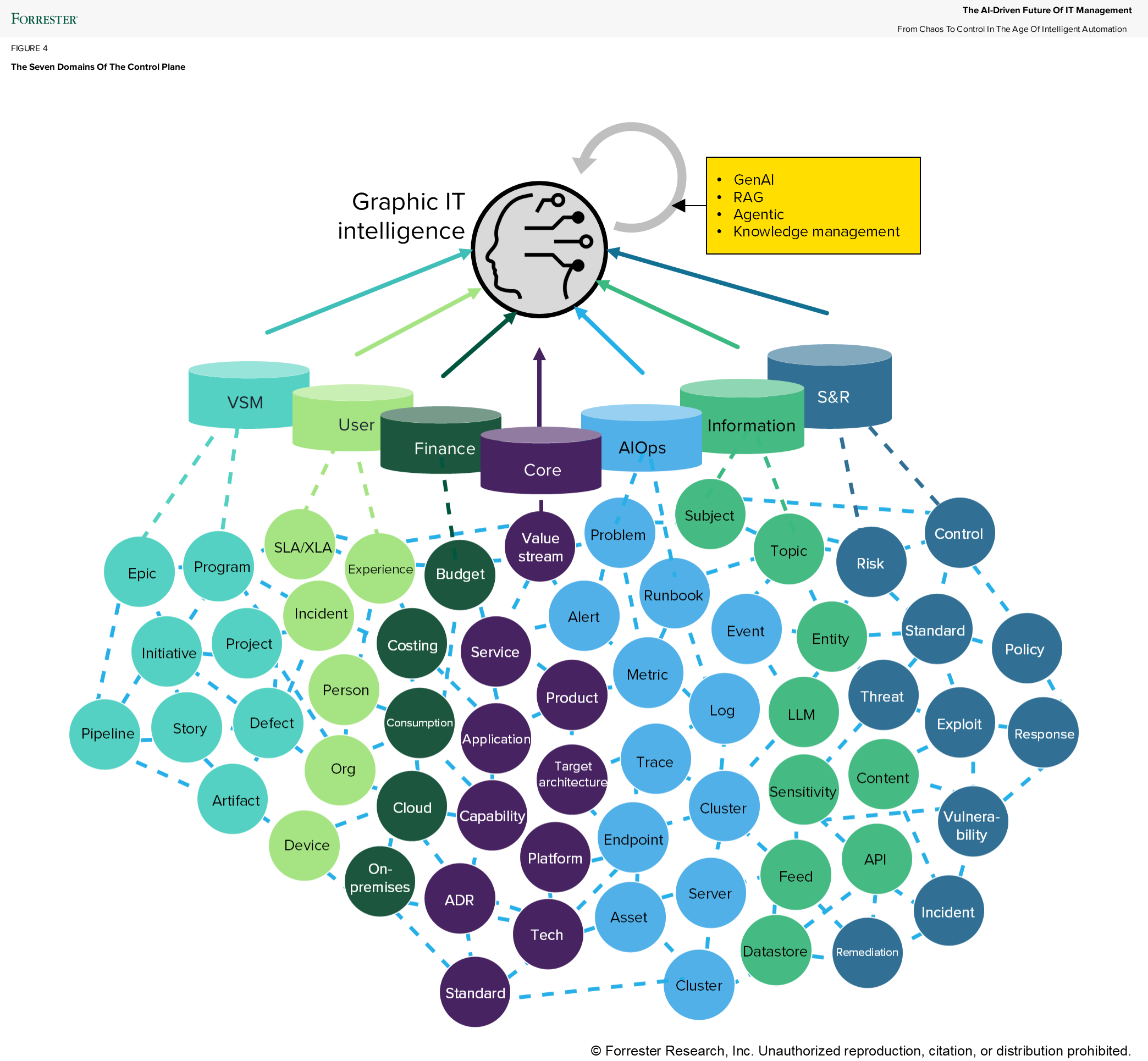Revolutionizing IT Management With Generative AI: The Future Is Here
The world of IT management is undergoing a seismic transformation, driven by generative AI (genAI). While much of the discussion around genAI has revolved around its business-facing applications, the technology is poised to reshape IT operations themselves. From improving visibility and collaboration to accelerating learning and decision-making, genAI offers IT leaders a unique opportunity to rethink how their organizations operate and thereby gain strategic digital advantage.
For CEOs and CIOs, genAI promises more than incremental productivity gains; it provides a new layer of instrumentation that enhances visibility, velocity, and adaptability across the digital enterprise. This isn’t just about automating tasks or streamlining workflows. GenAI enables organizations to sense, decide, and act with greater precision and speed, transforming strategic decision-making into a continuous, real-time process.
Take, for instance, the way genAI collapses cycle times. Ideas that once took weeks or months to move from inception to implementation can now be executed in days. Teams empowered by AI tools can brainstorm, prioritize, and deliver solutions with unprecedented efficiency. GenAI is also proving invaluable in breaking down silos, fostering collaboration, and amplifying collective intelligence.
IT leaders must recognize the paradox at play here: While managing billion-dollar portfolios and cutting-edge customer-facing systems, many IT departments still rely on outdated processes such as spreadsheets and email for internal operations. GenAI exposes these inefficiencies, highlighting the need for modernization and structure. Without well-defined processes and resilient architectures, the acceleration that genAI brings risks amplifying chaos instead of streamlining workflows.
The key lies in building a robust IT operating model that integrates genAI into the fabric of management systems. Graph databases and retrieval-augmented generation are foundational technologies for this transformation. Graphs represent entities and relationships flexibly, allowing genAI to reason across complex data landscapes. By investing in graph-based knowledge infrastructure, organizations can unlock the full potential of AI while ensuring transparency, traceability, and alignment.
Major vendors such as Atlassian, SAP, ServiceNow, and many more are embedding genAI deeply into their platforms, offering solutions that span the software development lifecycle, financial operations, security, and risk management. These innovations enable IT leaders to unify disparate datasets, streamline governance, and make informed decisions in real time. Success requires more than adopting shiny new tools, however; it demands a strategic focus on semantics, data hygiene, and architectural coherence.
Governance is another critical area. Who governs the graph — and the data it connects — will shape the future of genAI-enabled IT management. Organizations must define roles, ensure semantic alignment across domains, and anticipate challenges such as vendor competition and graph sprawl. A control plane architect, skilled in knowledge engineering and genAI design, will be indispensable to navigating this complex landscape.
The seven convergence domains represent the pillars of a genAI-enabled IT control plane, each integrating AI to deliver actionable insights and operational efficiency.
- Value stream management unifies software development lifecycle data, enabling teams to track performance and alignment with business priorities.
- Experience and service focuses on end-user satisfaction, aggregating insights from digital employee experience telemetry to enhance service delivery.
- IT financial management and FinOps consolidates cloud costs, budgets, and usage metrics, leveraging AI to optimize spending and resource allocation.
- Portfolio, architecture, and configuration management database tools converge into a graph-centric layer that detects architectural drift, technical debt, and misalignment.
- AIOps, observability, and automation synthesizes IT telemetry to identify patterns, correlate root causes, and recommend remediations.
- Data and information management employs AI for metadata governance, anomaly detection, and conversational data search.
- Finally, security and risk platforms use graph-based models to map vulnerabilities, simulate attack paths, and enable AI-powered risk awareness across the enterprise. Together, these domains form the backbone of a unified, intelligent IT ecosystem.
Most if not all IT management vendors are moving fast to implement AI, which provides clear benefit to IT professionals tasked with managing large IT estates. Ultimately, genAI is not just a technology; it’s a forcing function that both enables, as well as demands that IT leaders address silos, technical debt, and misalignment. The organizations that embrace “AI plus graph” as a foundational architecture will gain a long-term competitive edge, while those that hesitate risk being left behind. The future of IT management is intelligent, connected, and fast. The question is: Are you ready to lead the charge?
For more, Forrester clients can view the new report, The AI-Driven Future Of IT Management.

